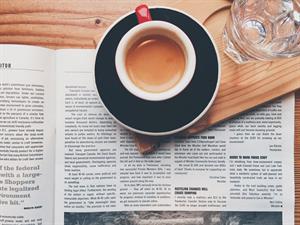PDF chapter test TRY NOW
A group of sentences formed together related to one particular topic, or develops to a single point, is called a paragraph.
A paragraph in simple words is a group of sentences. Take any book for example, the text is divided into units called paragraphs to make the reading easier and interesting. Also, each paragraph starts with an indent to the right. It is done to show that a new idea or concept is being introduced in the next paragraph.

Why is a paragraph needed?
1. To make reading easier.
2. To mark an introduction of a new concept.
3. To mark a step in the development of an argument.
4. To reduce the monotony.
2. To mark an introduction of a new concept.
3. To mark a step in the development of an argument.
4. To reduce the monotony.
Important!
There is no specific unit to specify the length of a paragraph. It can be short or long, as required to explain the point.
What are the important features of a paragraph?
1. Unity: Each paragraph should deal with a single idea or thought. If you are writing an essay, each paragraph should have a heading and a sub-heading if required. Every sentence should be coherent and should develop the idea as it progresses. It must remain closely connected to the main idea of the paragraph.
2. Order: There should be a logical sequence followed in the expression of ideas. The topic should be relevant to the paragraph and vice-versa. There can be the development of the topical idea but not a deviation. If there is a counter-argument point, it must be taken to the next paragraph. It should follow the logic of introduction in the first sentence, explanation in the middle part and the conclusion must answer all the questions raised at the start of the paragraph.
3. Variety: The paragraphs can be of varying lengths, as the case requires. It can be of one or two sentences, or even of eight sentences. Varying lengths of paragraphs add variety to the text and make it look better and easier to read.
Important!
The paragraphs should start further from the margin than the main part of the paragraph - this is called an indent.
The example of a paragraph writing from the lesson "Packing" (using words such as first, then, next, afterwards, finally):
First, Jerome packed the things for the trip. Then, Harris interrupted in between and asked him whether he had packed the boots in. Next, Jerome searched for the boots and understood that he hadn’t kept the boots in. Later, he had a horrible thought in his mind about whether he had packed his toothbrush. Afterwards, Jerome took all the things out of the bag and started searching for it. Finally, he found the toothbrush inside his boot.
